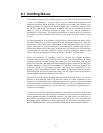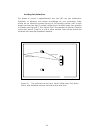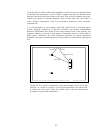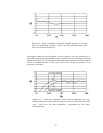20
An Optical Analogy
Let us use a visual analogy to aid our understanding of acoustics. Imagine
that you are in a room that is lit only by a candle in its center. There is
(approximately) a uniform amount of light cast in all directions. If a large
mirror is held closely to candle, one half of the room becomes darkened,
while the other half receives twice as much light. This is because there are
effectively two candles now illuminating that half of the room, the real
candle, and the virtual (or reflected) candle. The energy that had been sent
to both sides of the room has now been concentrated in one side only.
If we repeat the same experiment using a large piece of black cloth instead
of a mirror, the results will be somewhat different. The side of the room behind
the cloth is darkened, just as before, but the level of light on the side of the
candle remains unchanged. This is because the light is absorbed by the cloth,
rather than being reflected back into the room.
Thus we can see that the energy can either be absorbed or reflected. A
similar situation occurs with sound waves, although we must account for the
much greater wavelengths of audible frequencies. Of course no material is a
perfect absorber or an absolute reflector. Furthermore, the sonic absorption
coefficient of a given material usually varies with frequency.
Basic Room Acoustics
The great majority of all listening rooms are rectangular, with parallel surfaces.
The walls and ceiling are typically hard surfaces, which are acoustically
reflective. These large areas are the predominating factors in the overall room
acoustics, although the other items in the room (furnishings, carpeting, wall
hangings, doorways, etc.) will also play a role. Without going into excessive
detail, there are four primary areas of potential concern:
1. Standing waves.
2. Flutter echo.
3. Early reflections.
4. Bass reinforcement.
The first three items are problems which should be reduced or eliminated. The
last item, bass reinforcement, needs to be matched to the entire system for
proper tonal balance.


















